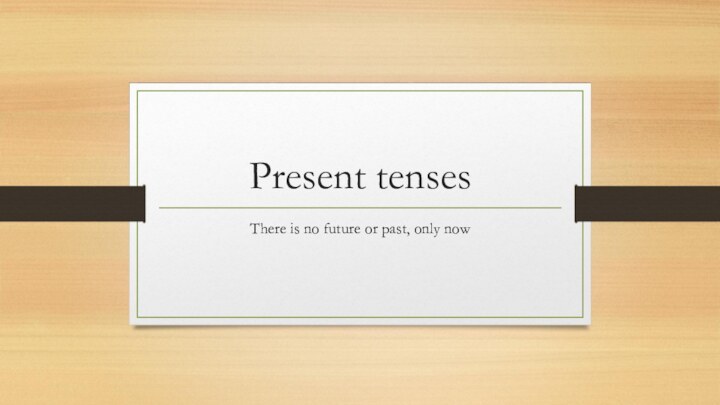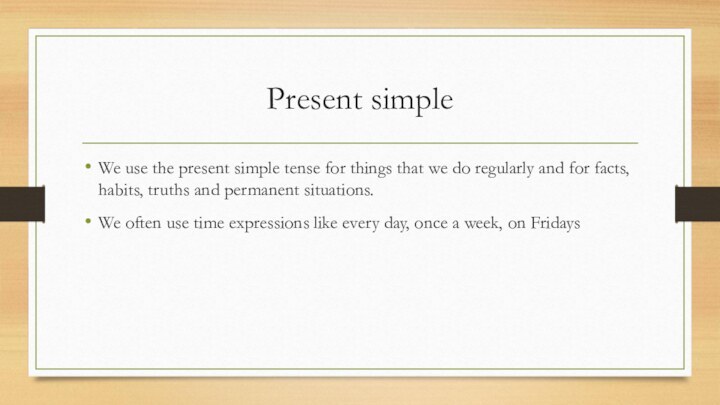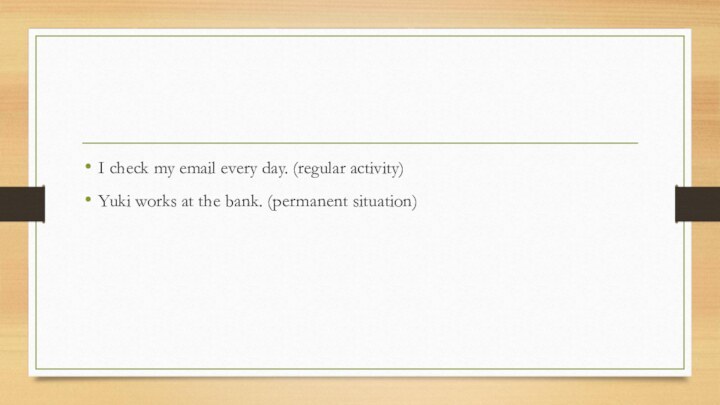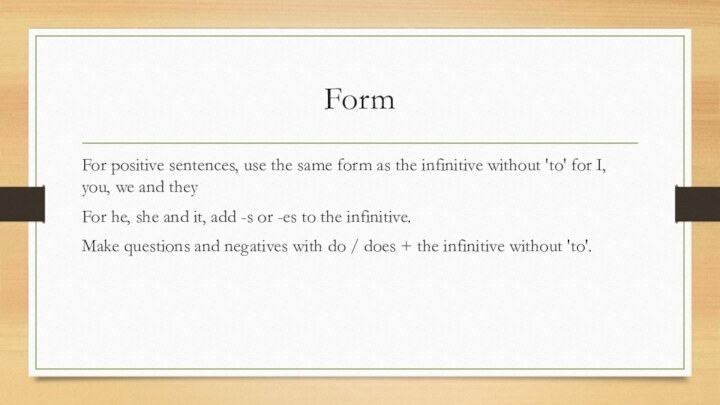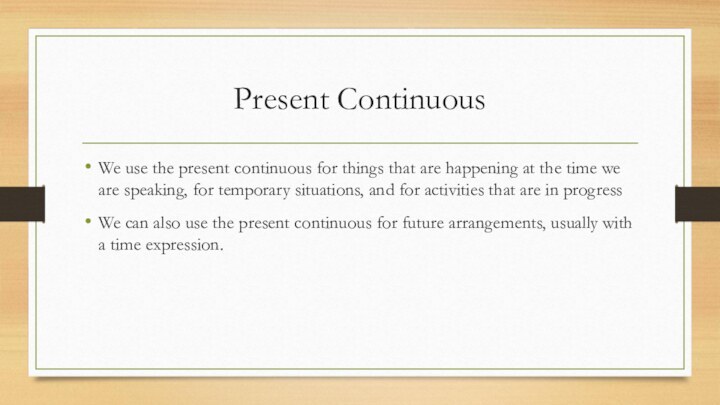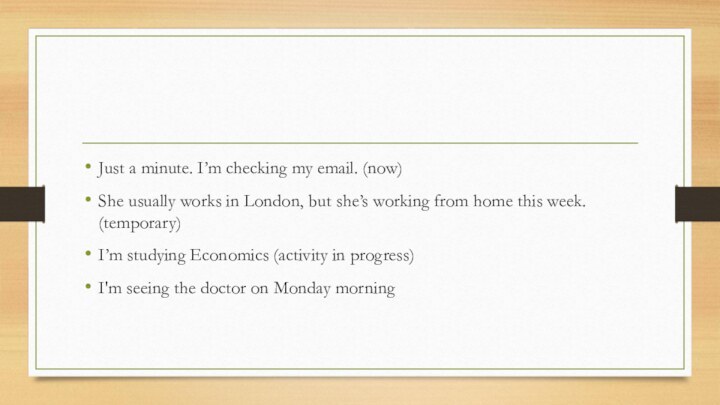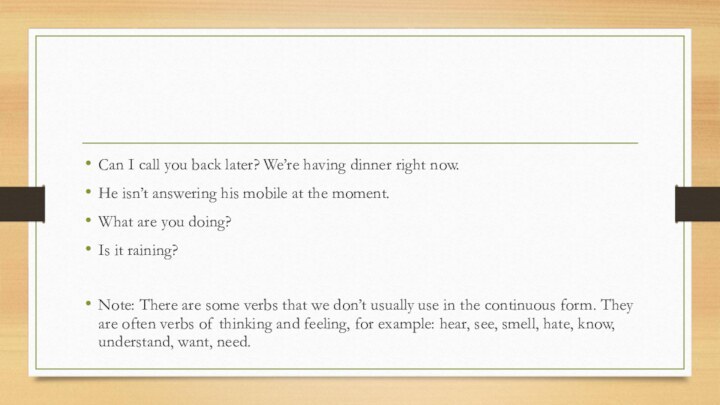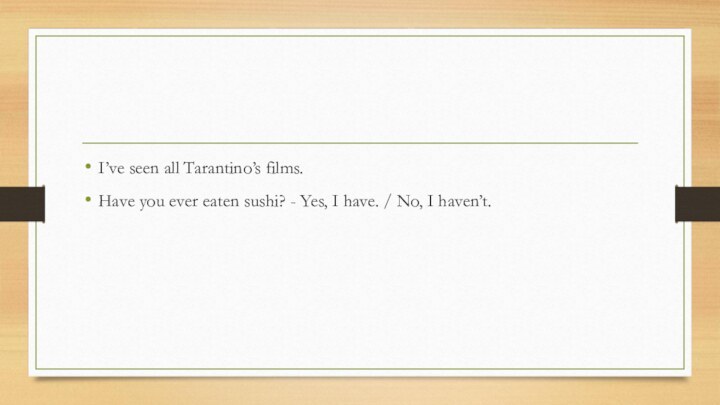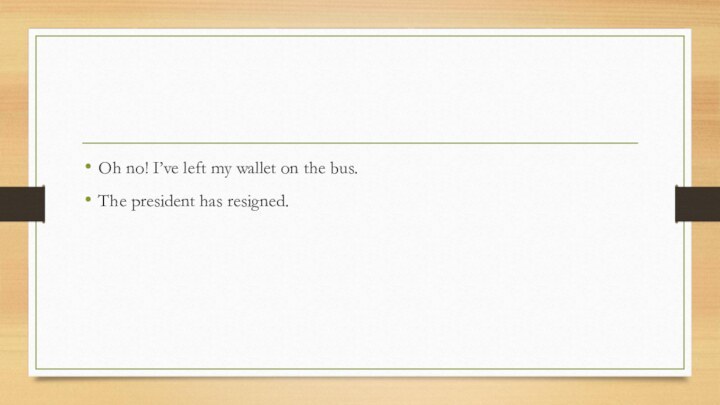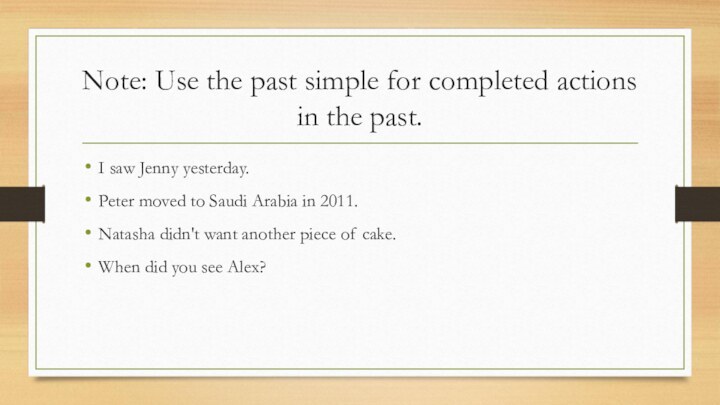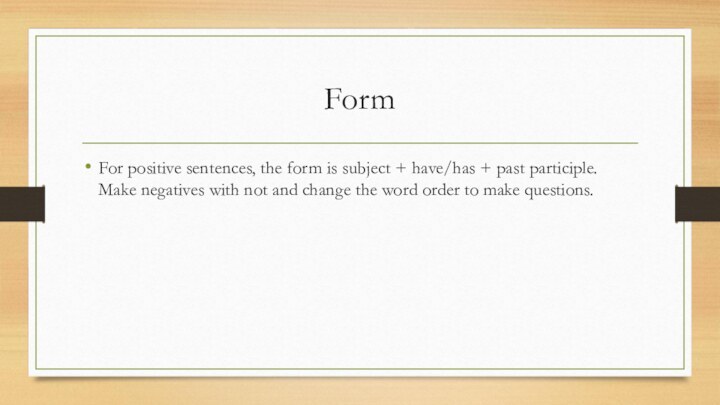Слайд 2
Present simple
We use the present simple tense for
things that we do regularly and for facts, habits,
truths and permanent situations.
We often use time expressions like every day, once a week, on Fridays
Слайд 3
I check my email every day. (regular activity)
Yuki
works at the bank. (permanent situation)
Слайд 4
Form
For positive sentences, use the same form as
the infinitive without 'to' for I, you, we and
they
For he, she and it, add -s or -es to the infinitive.
Make questions and negatives with do / does + the infinitive without 'to'.
Слайд 5
They live in Rome.
Julian starts work at nine
o’clock and finishes at five.
I don't eat meat.
It doesn't
usually snow in October.
Why do you read the news online every day?
Does the supermarket sell stamps?
Слайд 6
Present Continuous
We use the present continuous for things
that are happening at the time we are speaking,
for temporary situations, and for activities that are in progress
We can also use the present continuous for future arrangements, usually with a time expression.
Слайд 7
Just a minute. I’m checking my email. (now)
She
usually works in London, but she’s working from home
this week. (temporary)
I’m studying Economics (activity in progress)
I'm seeing the doctor on Monday morning
Слайд 8
Form
For positive sentences, the form is subject +
am/is/are + verb-ing.
Make questions and negatives with am/are/is
+ not + verb-ing.
Слайд 9
Can I call you back later? We’re having
dinner right now.
He isn’t answering his mobile at the
moment.
What are you doing?
Is it raining?
Note: There are some verbs that we don’t usually use in the continuous form. They are often verbs of thinking and feeling, for example: hear, see, smell, hate, know, understand, want, need.
Слайд 10
Present Perfect
Life experiences in the past. We don’t
say when these happened: we are interested in the
experience, not the time or date. We often use ever and never
Recent past actions that are important now
3) Past situations that are still happening now. We often use how long with for (throughout a period of time) and since (from a point in the past until now)
4) With just, already, yet to talk about recent events in the past. The exact time is not important. Use just and already mainly in positive sentences. Use yet in negatives and questions.
Слайд 11
I’ve seen all Tarantino’s films.
Have you ever eaten
sushi? - Yes, I have. / No, I haven’t.
Слайд 12
Oh no! I’ve left my wallet on the
bus.
The president has resigned.
Слайд 13
I haven’t seen Jenny this morning. (It is
still this morning.)
How long have you known Mitya? -
I’ve known him for two years.
Jack's been in Italy since January.
Слайд 14
It’s just stopped raining. Let’s go out.
Can you
feed the cat? - I’ve already fed her.
We can
still watch the film. It hasn’t started yet.
Have you done your English homework yet?
Слайд 15
Note: Use the past simple for completed actions
in the past.
I saw Jenny yesterday.
Peter moved to Saudi
Arabia in 2011.
Natasha didn't want another piece of cake.
When did you see Alex?
Слайд 16
Form
For positive sentences, the form is subject +
have/has + past participle. Make negatives with not and
change the word order to make questions.
